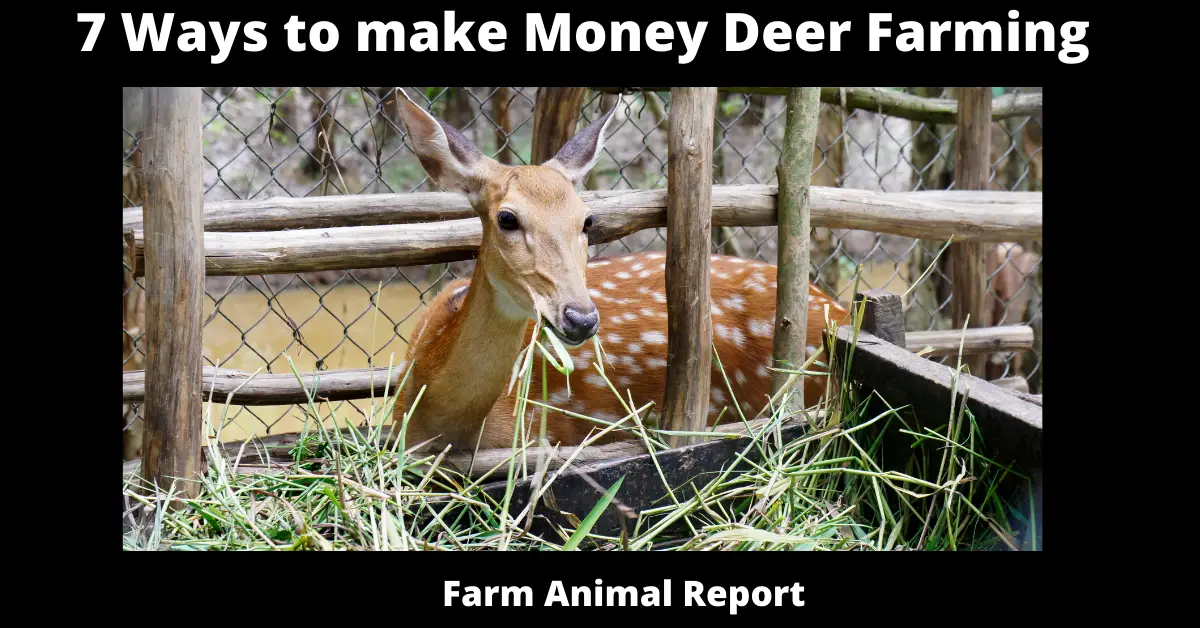As a General Rule Deer Farmers Generate cash from 1) Lean Meat 2) Raising Pedigree Stock 3) Selling Deer Urine 4) Velvet 5) Trophy Antlers on Hunting Ranches
- Lean Meat
- Hides
- Stud Services
- Antlers
- Velvet
- Deer Urine for Scents
- Farming in poor pastures
Ways to Make Money Deer Farming.
Deer farming has gained popularity in recent years as demand for grass-fed, natural meats has increased. Perhaps this is because venison is a lean meat with high protein content and minimal fat, making it perfect for those following a paleo or ketogenic diet. According to the North American Deer Farmer Association, farming deer is one of the quickest growing alternative agriculture sectors in rural America, contributing $7.9 billion to the US economy. 4 Types Deer Raised on Deer Farms
Indeed, venison has made its way into fast-food restaurants, with Arby’s offering a seasonal sandwich. Indeed, Arby’s could not obtain enough venison produced in the United States for their promotion last year and had to source it from New Zealand. Deer farming is a rapidly growing livestock alternative, and venison is readily available.
Native American tribes began raising cervids (deer farms) in the early 1900s to reconnect with their roots and feed their people. Many farmers are now recognizing the unique opportunities presented by raising these hardy animals that, unlike other livestock, are native to the landscape.
Elk, reindeer, axis (chital), sika (spotted deer), red, whitetail, and fallow deer are all members of the cervid family. Deer come in a variety of species and are adaptable to a wide variety of habitats. However, it’s worth noting before you dive in that specific permits may be required in your state to raise deer for meat.
Understanding How Deer Farmers make Money.
Deer farming, which began in the 1970s as a way for farmers to maximize their land’s profit potential, is gaining popularity. Due to the adaptability of deer to various terrains, raising and breeding domesticated deer is a viable method of utilizing small tracts of marginal land. Additionally, consumer demand for venison as an alternative to factory-farmed meat is increasing. Additionally, venison has several advantages for healthy nuts: As with wild venison, farmed venison is a lean cut that is superior in protein and low in fat.
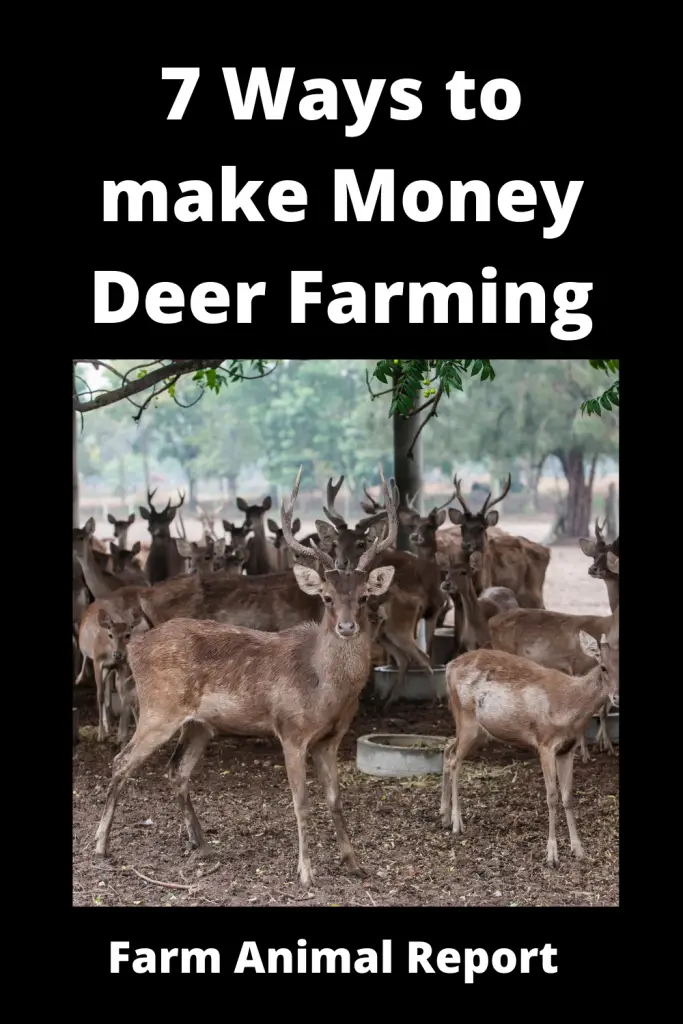
However, the United States currently produces only 20% of the venison required to meet domestic demand, according to the North American Deer Farmer Association. The US deer market has seen consistent annual increases of 25 to 30% to close this gap. Indeed, rural America’s cervid livestock industry, including elk, reindeer, axis, sika, red, whitetail, and fallow deer, is one of the fastest-growing.
Raising a herd of deer in your own deer farm has the potential to be more profitable than raising conventional livestock. Deer consume less fodder than cattle, are less destructive to pastures, mature faster, and reproduce in captivity for up to 20 years. Farmers can maintain a high-quality herd on a small piece of land due to the animals’ adaptability to various terrains.
Types of Deer for Profit
There are numerous deer breeds available worldwide. Each deer breed has its unique characteristics, habits, color, body size, and feeding habits. Certain breeds grow to giant proportions, while others remain extremely small. Some are white, red, black, or other solid colors, while others are multicolored. Certain deer breeds are extremely meat-productive.
Best Breeds to Raise on Farms
Below is a brief description of several popular deer farms breeds.
Fallow
Fallow deer are one of the most stunning deer breeds. They are extremely popular due to their distinguished appearance. We can find these deer in abundance in parks and zoos due to their decorative nature. They have different colors ranging from black to shades of brown with spots to white. Each year, their antlers break and regrow. Fallow is an excellent breed for domestic farming.
Sika
These breeds are believed to have originated in the far east. Sika is also a popular breed in zoos and parks. Nowadays, the number of sika is rapidly increasing. Numerous sika species are available. Manchurian, Japanese, and Formosan sika are the most prevalent. Sika is a highly meat-producing species.
Red Deer
Red deer is ideal for farming and is extremely popular with farmers. Because they are low maintenance and require little management for domestic farming, this breed is ideal for commercial deer farming. Their food conversion rate and meat quality increase dramatically.
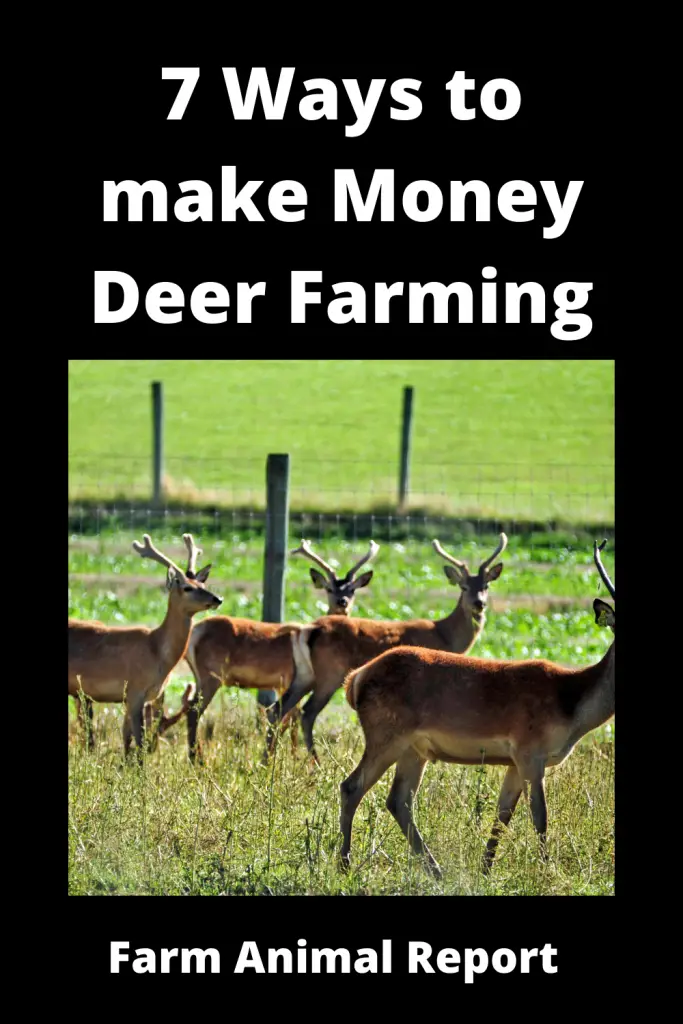
White Red Deer
White, red deer breeds are purebred red deer that carry white genes in both males and females.
Trophy Whitetail
Trophy whitetail deer grow to giant proportions. Their antlers are large, and their tails become white. They are highly productive in terms of meat.
Trophy Axis
Trophy axis deer have a burnt orange coat with white spots, similar to a blackish streak, and a whitetail fawn running the length of their spine, similar to whitetail fawn. The male axis has enormous antlers. They enjoy the grass and are more active at dawn and dusk. Axis is an endangered species. They live an average of Eight to Twelve years.
Trophy Red Stag
Trophy red stag deer are colossal. Their entire body is red. A male deer is equipped with a pair of large antlers. They develop a high rate of meat production. They are pretty lovely to look at.
Reindeer
Reindeer are indigenous to the Arctic and Subarctic regions. They come in a variety of colors and sizes. Antlers are present on both male and female reindeer. Males grow in size relative to females. They are medium-sized, with adults weighing between 70 and 110 kilograms. They are highly well-known meat-producing deer breeds.
Mule Deer
Mule deer are indigenous to North America. Their tails have a black tip. Their antlers are divided in two. A mature mule deer weighs between 70 and 150 kilograms. They are extremely popular among hunters due to their meat. They eat a wide variety of grasses and plants.
What Age To Begin Breeding Deer Male / Female
They reach puberty at approximately 16 months of age and then exhibit seasonal polyestrous behavior. Deer are most responsive to short-day lighting, which means they do not cycle during the summer but begin to exhibit estrous behavior in late September and October.
Raising Deer for Pets
When deer are born in the wild, they are not meant to be raised alone or as part of a human family; separating them from their herd and natural habitat is unjust, and they are challenging to domesticate. They will tolerate your presence to a point if you feed them.
Even when bred in captivity, deer are undesirable pets. While they can be tamed and are initially small, manageable, and adorable, they mature into unmanageable and wary creatures. Domesticated deer may attack humans during mating season and become aggressive to protect their young.
While deer will demand freedom, returning a captive-bred deer to the wild without teaching it to fend for itself constitutes animal cruelty.
Consulting for Beginner Deer Farmers
This is a must-do for anyone considering a career in the deer industry. The majority of deer farmers welcome farm tours, and not all deer farmers view farm tours as opportunities to sell their stock. Most serious farmers recognize the importance of new farmers entering the business and providing those new farmers with the information necessary to succeed.
Pros of Raising Deer
The most excellent way to determine whether or not deer farming is a good fit for you is to visit some farms. Google “deer farms” in your state and send an email to local farmers. You can learn where they purchased their initial inventory and view an approved setup.
If you’re still undecided, consider the following advantages of deer farming:
- They develop rapidly.
- Deer have a lifespan of up to 20 years.
- They are less destructive to fields and consume less fodder than cattle.
- Antlers, antler velvet, and hides are all secondary uses.
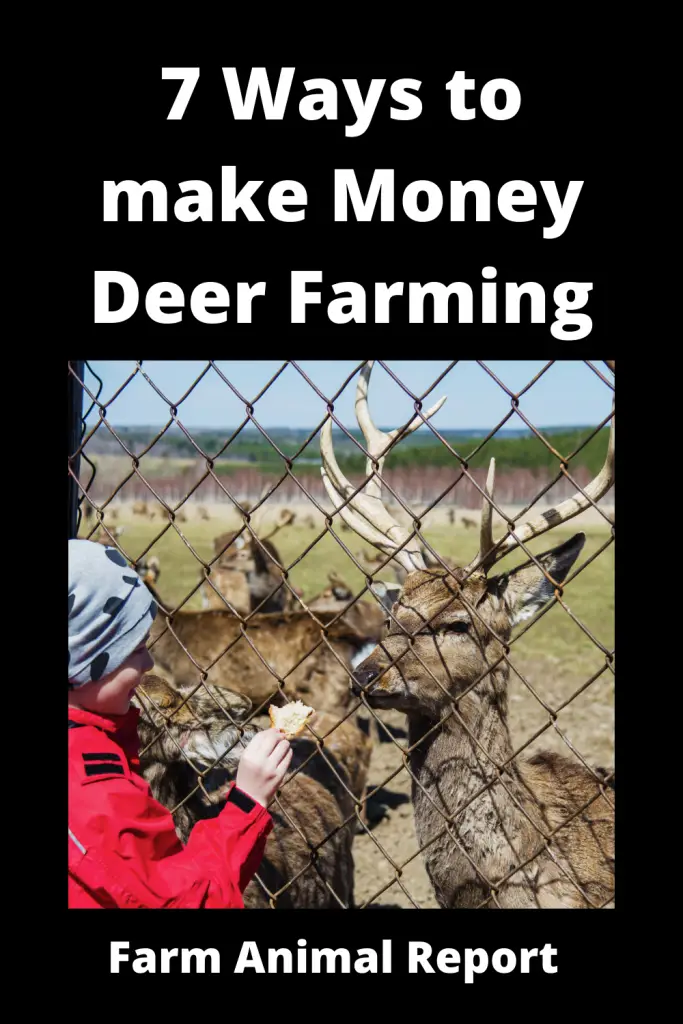
Cons of Raising Deer
However, all is not well. Before you begin raising deer, there are a few things you should understand:
- Fencing can be quite costly.
- Government agencies heavily regulate deer hunting, and in most areas, permits or licenses are required.
- Because deer are not as domesticated as sheep or cattle, their care can be more difficult.
Species of Deer
In North America, three species of deer are commonly raised for meat. Fallow deer, white-tailed deer, and elk are the three species. However, some states prohibit the raising of native deer species such as white-tailed and elk.
Two popular non-native species are fallow and sika deer. These deer have the advantage of being smaller and easier to handle. Additionally, they may be less regulated.
Types of Deer for Deer Farming
| Breed of Deer | Weight | Price of Venison | ||
|---|---|---|---|---|
| Whitetail | Buck - 150 lb Doe - 100 lbs | $ 29.50 | ||
| Mule | Buck - 150 - 300 lbs Does - 95 - 200 lbs | $ 44.95 | ||
| Red | Buck 350 - 530 lbs Doe 260 - 370 lbs | $ 21.95 | ||
| Fallow | Buck - 130 - 200 lbs Does - 60 - 90lbs | $ 39.95 | ||
| Axis | Bucks 150 - 250 lbs Does 90 - 150 lbs | $ 43.95 | ||
| Reindeer | Buck 350 - 400 lbs Does - 180 - 260 lbs | $ 74.95 |
Permits
When deciding to enter the deer farming business, it is necessary to conduct some research. Unlike commercial livestock, deer are subject to additional regulations and permits. Need to check your local department of agriculture
Because cervids live in the wild, it is critical to prevent people from stealing wild babies. Additionally, livestock deer are subject to specific processing and transportation regulations.
These regulations vary according to the species being raised. State requirements also vary, though many states have joint cervid regulations in addition to those administered by the Departments of Agriculture and Fish and Wildlife.
Fish and Wildlife typically regulate houses and fencing. Agriculture is responsible for regulating the sale of agricultural products such as meat and antlers. Both departments inspect cervid farmers twice a year. As with other livestock sold for meat, farmers must keep records on deer diseases such as tuberculosis, chronic wasting disease, and brucellosis.
Feeding and Housing
Deer are browsers and thrive on pastures, particularly those with brush and small trees. They thrive in a rotational grazing system and obtain the most significant amount of nutrients from healthy pasture. They do, however, require hay during the colder months to meet their nutritional requirements. Additionally, you can supplement with a high-quality grain developed for deer. Purina and Antler King both offer deer feeds.
It is always good to collect a soil sample from your pastures before introducing deer. If your soil is deficient in nutrients, the graze will be of poor quality, necessitating supplementation. This increases your expenses. If the quality of your pasture is poor, you can reseed sections of it with hardy grasses native to your area. Frequently, switchgrass, big bluestem, and gamma grass are preferable to fescue and clover.
Fish and Wildlife examine whether the deer have adequate pasture as one of their requirements.
Each adult animal requires approximately 1000 square feet of space. Thus, an acre of well-grazed land can support 2-3 adult whitetail deer, 7-10 adult fallow deer, 4-7 adult red deer, 7-8 axis deer, and 1-2 elk.
Additionally, it would benefit if you planned for weather protection and feeding and watering your animals. Numerous deer farmers employ simple three-sided structures in their fields to shelter deer from inclement weather. They should be oriented away from the prevailing winter winds.
For personal safety during the rut season, it’s prudent to consider food and water dispensation from outside the pen. Like other male animals, male deer can be dangerous during the breeding season, which is why water tanks should be installed along the fence line. This enables you to easily monitor and replenish them without having to enter the field.
Caring for Your Deer
A deer’s social structure is herd-based. Females and their offspring from a single herd, whereas adult males establish their own. They may remain distinct for most of the year, reuniting only during the breeding season (also known as the rut).
Certain farmers prefer the more natural method of allowing does to raise their fawns. Others bottle-feed infants to exert greater control over the animal’s food intake and behavior. This way, the deer become accustomed to handling and become easier to treat if they develop a medical problem or require vaccinations.
A word of caution: Bucks raised for breeding purposes should not be bottled. When they mature, they frequently exhibit behavioral issues and can become highly aggressive during the rut. Consider the weight of your obnoxious Billy goat at 450 pounds! Among deer farmers, artificial insemination is gaining popularity. Breeders’ recognition of names and use of pedigrees is increasing.
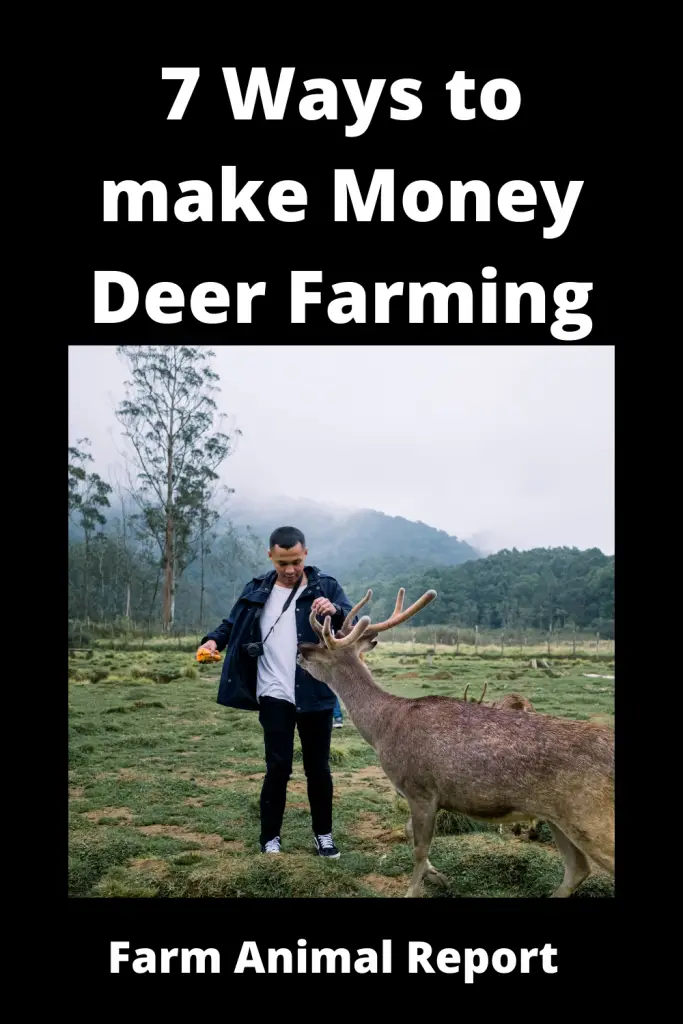
Finding a Veterinarian
Finding a veterinarian who is knowledgeable about deer can be challenging. Veterinarians are not trained to treat exotic animals in vet school, and your veterinarian may lack experience treating deer. Although deer and other ruminants share many characteristics, a large animal veterinarian typically works with more common animals such as cattle and goats.
The better option is to contact your vet before purchasing your animals to ensure they are on board. If your veterinarian is hesitant because they lack knowledge about a particular species, you can reassure them that you are willing to accompany them on their learning journey.
The North American Deer Farmers Association publishes health-related information for you and your veterinarian.
Deer / Cervid Farming / Profitability Table
| Deer Type | Ave Weight | Average Calves/Yr | Gestation | Meat Retail Price/lb |
|---|---|---|---|---|
| White Tailed | 150 | 2 | 201 | $ 38.95 |
| Mule | 120 - 320 | 2 | 203 | $ 7 - 9.50 |
| Elk | 71- - 730 | 1 | 240 - 262 | $ 44.95 |
| Reindeer | 350 - 400 | 1 | 222 | $ 74.95 |
| Moose | 840 - 1500 | 1 | 243 | $ 7.50 |
| Sika | 93 | 1 | 224 | 34.95 |
| Red | 440 | 1 | 236 | $ 35.95 |
| Pere David's | 370 | 1 | 286 | |
| Axis | 79 | 2 | 227 | $ 29.99 |
| Mutjah | 30 | 1 | 214 | $ 39.95 |
Deer Diseases
Numerous diseases can affect deer. You and your veterinarian should devise a strategy for protecting your herd.
Tuberculosis
Tuberculosis in cattle and white-tailed deer can be transmitted. It is primarily spread via airborne particles but can also be transmitted via food.
Coughing, nasal discharge, and difficulty breathing are the primary symptoms. There are currently no vaccines available for cervids, but there is one available for cattle.
Chronic Wasting Disease
This disease is a neurological condition that results in brain degeneration. There is no vaccine available at the moment. Scrapie in the goats and sheep, mad cow disease in cattle, and Creutzfeldt-Jakob disease in humans are all related diseases. The majority of states require testing of all animals over the age of one year that dies for any reason.
Brucellosis
Brucellosis, another disease that affects cattle, is considered uncommon in captive cervids. Elk and moose are more likely to have it. It is transmitted through bodily secretions such as saliva, urine, pus, and sperm. Additionally, the disease can be transmitted to the fetus during pregnancy, resulting in a tiny, unhealthy fawn or calf.
Fencing for Deer
As you might expect, your most significant investment will almost certainly be in fencing. All of you who have gardens out there know that the best way to keep deer out is with a tall fence. Additionally, a tall fence is the best way to keep deer contained within an enclosure.
Exterior fences should be at least 8 feet above ground level throughout their length and constructed of heavy gauge wire. The best-woven wire is between 12.5-14.5 gauge. The diameter of the wooden corner posts should be 5 inches. Because wooden posts are sturdy, they work well. Posts should be buried a least three feet into the ground.
Additionally, it would benefit if you planned for a squeeze chute or crush. This is extremely beneficial whenever you need to administer medical treatment to an animal or transport it. It is good to install a shade cloth or a wooden snow fence outside the barrier fence. Deer are naturally fearful prey animals, and this visual barrier helps keep them calm. Additionally, it can serve as a deterrent to predators.
Herd Structure
A deer’s social structure is herd-based. Females and their offspring from a single herd, whereas adult males establish their own. They may remain separate for the majority of the year, except breeding season and the rut.
Handling
Every deer operation, regardless of size, should have some form of handling facility. This facility may include runways, mazes, drop or squeeze chutes, and will require an enclosure large enough to accommodate individuals awaiting transport, observation during health testing periods, or quarantine. Those who do not construct handling facilities must prepare and train themselves to tranquilize their deer. Those who have not received proper training must be prepared to accept the moral implications of darting deer.
When a rotational grazing system is established, deer will rotate between pastures and be herded to the working chute using four wheelers, a feeding truck, or even a feed bucket. Depending on the breeders’ budget and, most importantly, their objectives, the working facilities can be as simple as a cattle facility with 8′ fences or as complex as wholly enclosed buildings specifically for deer. If the breeder only requires a facility for vaccination and accreditation, a simple layout and cattle chute are frequently sufficient. However, if they intend to cut velvet or develop a genetics program using artificial insemination or ET, they should consider a more complex facility to manage the deer.
Buying Stock
Purchasing inventory is one of the final (but most certainly not least) steps in starting your business. Ideally, you should obtain information about the genetic and health history of the deer you are purchasing. Purchasing only from established, reputable deer farmers will minimize disappointments and disagreements over time.
While the seller is typically responsible for all required health certifications, all transaction details should be written to protect both parties. Closed herds from reputable deer operations ensure health status; genetic records add value to the product. Ensure that you obtain genetic and animal health records. Additionally, keep in mind that capturing and drugs will cause stress in the deer when transporting deer.
Final thoughts
Establishing a deer farm or ranch requires initiative, creativity, and a significant amount of time spent conducting research. After weighing your options and deciding on the best course of action for you, visit established operations and speak with other deer owners who raise the type of deer you are interested in. This initial step will save you considerable time later on and enable you to network critical data to get started on the right foot. Additionally, you will be able to begin developing your business plan and marketing strategies at this time.
Jump to Section on Deer
- 7 Ways to Make Money Deer Farming
- Deer Urine Collection – How Deer Pee is Gathered
- Deer Covered in Ticks / Do Ticks Affect Deer Meat
- What Does Deer Poop Look Like
- Will a Deer Die if You Cut Off its Antlers / Breeding / Velvet Harvesting
- Deer Shedding Velvet: Why Do Deer Antlers Bleed
- Why Do Deer Antlers have Bumps Charts / (3 Videos)
- What Happens If Deer Antlers Break Off / 5 How to Videos
- Why Do Deer Antlers Fall Off / Videos
- How do Deer Farmers Collect Urine / Ultimate Guide
- What to feed Deer in your Back Yard
- Will Goat Feed Grow Monster Deer
- Deer Farming Facts & Supplies
- Starting a Comercial Deer Farm
- How Long Are Deer Pregnant – What is Deer Gestation?


